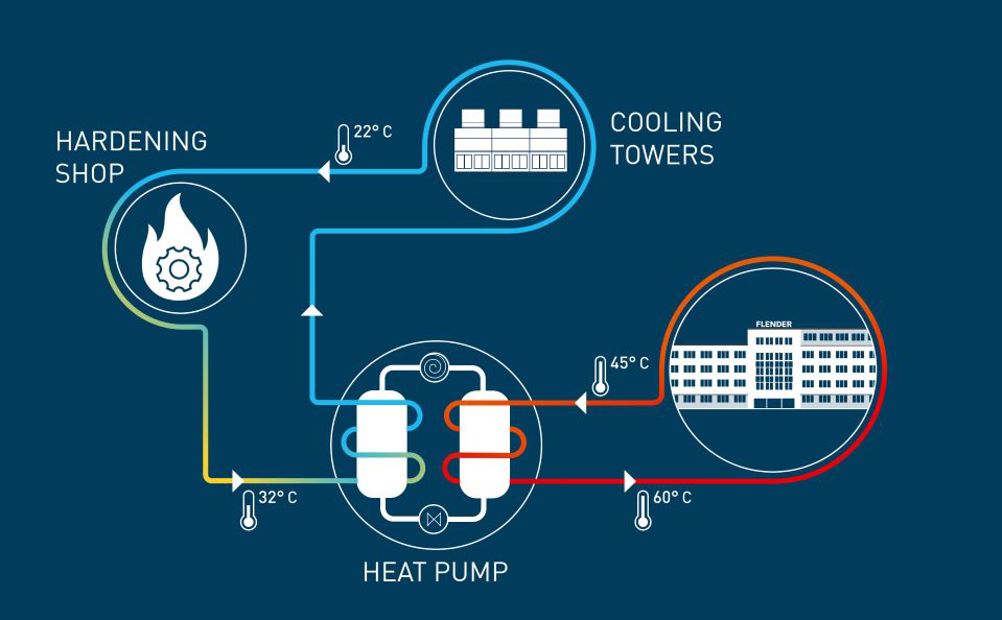The new heating process saves nearly 2.4 million kilowatt hours of natural gas annually and reduces CO2 emissions by 400 tons.
Flender requires around 20 million kilowatt hours of electricity annually at its Bocholt site to harden 15,000 tons of gear components to ensure their surface quality.
"With the launch of the new heat pump, we can transfer the waste heat generated when cooling the hardening furnaces to the site’s heating system. This is a unique process in this setup and scale," explained project manager Robert Iding.
The cooling water, at 32°C, heats the heating circuit water to the same temperature through a heat exchanger. The heat pump then heats this water to the 60°C required to heat the buildings. The process is comparable to that used in typical homes. The significant difference: with 622 kilowatts of thermal capacity, the heat pump installed at Flender is roughly 75 times more powerful than the standard heat pump in a typical single-family home. The water is then sent from the heating circuit back to the hardening shop. There it is reused at 22°C to cool the ovens and the cycle starts anew.

The construction work took six months. In addition to the heat pump, new water pipes were laid from the hardening facility across the company site. The large heating distributor and part of the heating system were also updated. "We examined the entire periphery of the heating system to modernize the system and make it as energy efficient as possible," said Iding.
"As an industrial company, we have a large responsibility to society and our climate to make our production as sustainable as possible,” said Flender CEO Andreas Evertz. “Those who have followed our activities in recent years know how committed we are to driving industrial transformation. Numerous projects have reduced our resource consumption and carbon footprint. This new heating method is another major milestone in reaching our self-imposed goals - a success everyone involved can be proud of."
"The new heating system is a long-term investment that pays off. We are reducing our energy consumption and setting another positive example in the industry. With the reduced gas consumption, the project also makes perfect economic sense," says Kimberley ten Broeke, Head of Corporate Social Responsibility (CSR) at Flender, who coordinates all of the company's sustainability activities.







